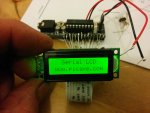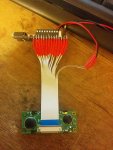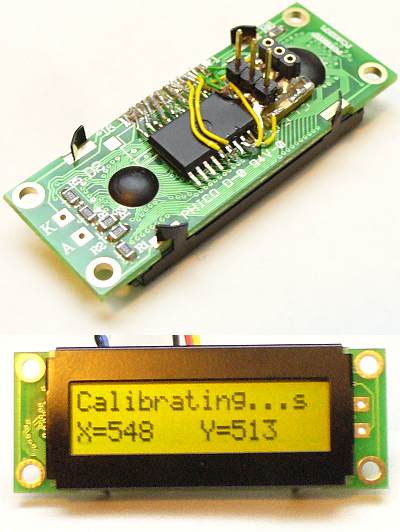Thought I'd share my latest acquisition and achievement at getting it to work: miniature 16x2 LCD displays from the same place those cool mp3 modules came from http://www.mdfly.com/index.php?main_page=product_info&products_id=201
They don't have a serial backpack so armed with info & code from this site http://www.jrhackett.net/ I removed the pre-attached flat cable and wired up the 1mm pitch connector pads of one of the displays to some normal 0.1" pin header using some 'high speed' solid core IDE cable and hooked it into a 18m2 on a breadboard:
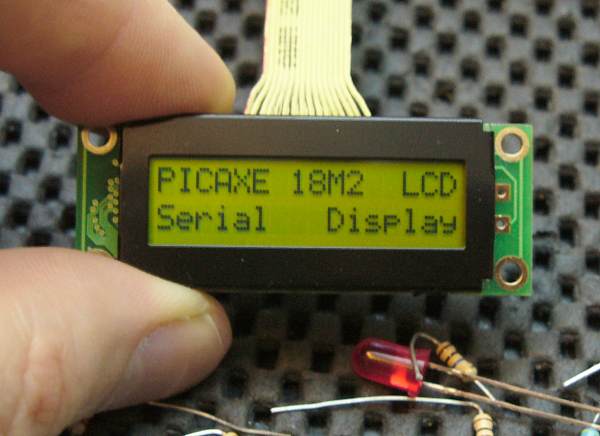
So tiny it's almost cute
Here's a size comparison with a 'normal sized' 20x2 LCD display:
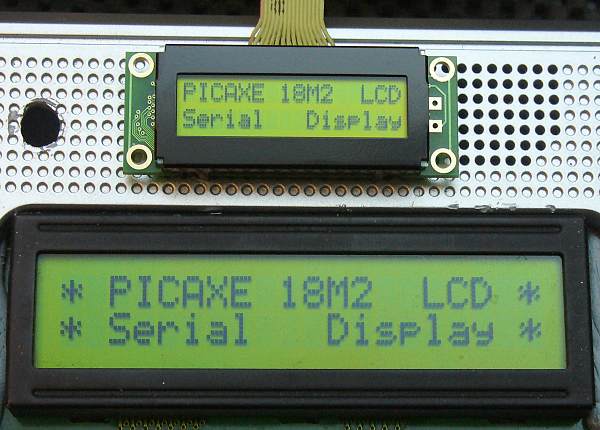
I'm thinking of doing a 'dead bug' with a SMD 20m2 to the back of the 3 miniature LCD displays I bought as serial backpack setups. Shame they didn't have an LED for a backlight despite the soldering points for an LED but it's very readable even in low light.
They don't have a serial backpack so armed with info & code from this site http://www.jrhackett.net/ I removed the pre-attached flat cable and wired up the 1mm pitch connector pads of one of the displays to some normal 0.1" pin header using some 'high speed' solid core IDE cable and hooked it into a 18m2 on a breadboard:

So tiny it's almost cute
Here's a size comparison with a 'normal sized' 20x2 LCD display:

I'm thinking of doing a 'dead bug' with a SMD 20m2 to the back of the 3 miniature LCD displays I bought as serial backpack setups. Shame they didn't have an LED for a backlight despite the soldering points for an LED but it's very readable even in low light.

